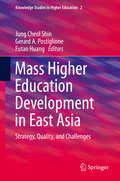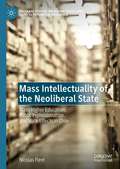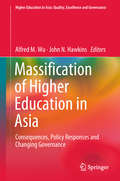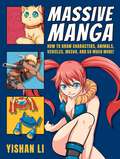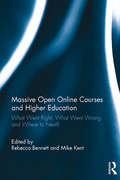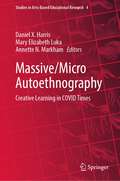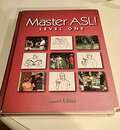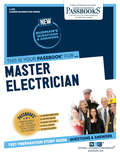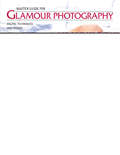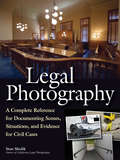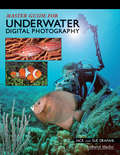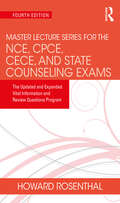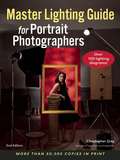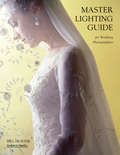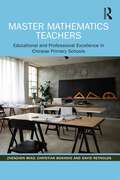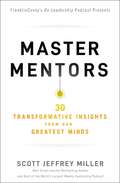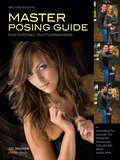- Table View
- List View
Mass Higher Education Development in East Asia
by Jung Cheol Shin Futao Huang Gerard A. PostiglioneThis book discusses mass higher education development in East Asian countries by means of three main issues: the strategy for higher education development; the way professors and students in the region are experiencing the rapid developments; and the challenges imposed by mass higher education. These challenges include the quality of education as well as structural changes in the rapidly developing systems, funding sources for supporting mass higher education, and job markets for college graduates. Part I discusses how the East Asian countries have accomplished or are in the process of accomplishing the rapid development of higher education. Japan, Korea, China, Taiwan, Malaysia, Singapore, and Hong Kong serve as case studies of mass higher education in the region. The case studies introduce and discuss national strategies to develop higher education, funding sources and mechanisms, and initiatives to assure quality of education in a period of rapid growth. Part II and Part III of the book focus on the phenomena of mass higher education in the region and the influence on academia. Mass higher education changes professors and students, who are different from those in elite higher education. Part III further discusses the challenges posed to Asian mass higher education.
Mass Intellectuality of the Neoliberal State: Mass Higher Education, Public Professionalism, and State Effects in Chile (Palgrave Studies on Global Policy and Critical Futures in Education)
by Nicolas FleetThis book addresses the political effects of the massification of higher education and intellectual labor in the neoliberal state. Using the case of Chile, the author argues that public professionalism emerges in the mass university system, producing excesses of knowledge which infuse the state with political purpose at many levels. The emergence of the student movement in 2011, then the major social mobilization against the neoliberal state since the restoration of democracy in 1990, provided a clear manifestation of the politicization and ideological divisions of the mass university system. In conditions of mass intellectuality, public professionals mobilize their political affinities and links with society, eventually affecting the direction of state power, even against neoliberal policy. Through several interviews with academics, public professionals, and other documentary and statistical analyses, the book illustrates the different sites of political socialization and the ideological effectiveness of the emergent mass intellectuality of the neoliberal state.
Mass Killings and Violence in Spain, 1936-1952: Grappling with the Past (Routledge/Canada Blanch Studies on Contemporary Spain #19)
by Peter Anderson Miguel Ángel del Arco BlancoHistorians have only recently established the scale of the violence carried out by the supporters of General Franco during and after the Spanish Civil War of 1936-1939. An estimated 88,000 unidentified victims of Francoist violence remain to be exhumed from mass graves and given a dignified burial, and for decades, the history of these victims has also been buried. This volume brings together a range of Spanish and British specialists who offer an original and challenging overview of this violence. Contributors not only examine the mass killings and incarcerations, but also carefully consider how the repression carried out in the government zone during the Civil War - long misrepresented in Francoist accounts - seeped into everyday life. A final section explores ways of facing Spain’s recent violent past.
Massification of Higher Education in Asia: Consequences, Policy Responses and Changing Governance (Higher Education in Asia: Quality, Excellence and Governance)
by John N. Hawkins Alfred M. WuThis book addresses important questions and puzzles regarding the massification of higher education in Asia. It equips readers to critically evaluate and understand the consequences and challenges that massification entails, while also prompting policymakers and higher education administrators to tackle emerging issues related to the massification of higher education. Readers will gain a deeper, nuanced understanding of this trend, including its impacts and governance issues.
Massive Manga: How to Draw Characters, Animals, Vehicles, Mecha, and So Much More!
by Yishan LiLearn to create and color your own manga characters!Massive Manga shows you step by step how to bring your ideas to life on paper. Learn by practicing the skills needed for drawing a wide range of manga in a huge variety of hairstyles, faces, and clothing, as well as animals, mechas, weapons, and vehicles. Each subject has a chapter of its own in which you&’ll find line-by-line instructions and tons of designs. From teens to tech, cuddly pups to dangerous dragons, you&’ll find them all here in these pages.Step-by-step drawings in pencil, ink, and color show you how to draw bodies, faces, eyes, hair, hands, and feet across a range of human and fantasy creations. Learn scores of hairstyles, facial expressions, hand gestures, and body poses. To complete your scenes, you&’ll learn how to draw accessories and gadgets, weapons, vehicles, and so much more!
Massive Open Online Courses and Higher Education: What Went Right, What Went Wrong and Where to Next?
by Rebecca Bennett Mike KentSince the first MOOC was launched at the University of Manitoba in 2008, this new form of the massification of higher education has been a rollercoaster ride for the university sector. The New York Times famously declared 2012 to be the year of the MOOC. However, by 2014, the number of academic leaders who believed the model was unsustainable doubled to more than 50%. While the MOOC hype has somewhat subsided, the attitudes and anxieties of this peak time can still be seen influencing universities and their administrations. This is the first volume that addresses Massive Open Online Courses from a post-MOOC perspective. We move beyond the initial hype and revolutionary promises of the peak-MOOC period and take a sober look at what endures in an area that is still rapidly growing, albeit without the headlines. This book explores the future of the MOOC in higher education by examining what went right, what went wrong and where to next for the massification of higher education and online learning and teaching. The chapters in this collection address these questions from a wide variety of different backgrounds, methodologies and regional perspectives. They explore learner experiences, the move towards course for credit, innovative design, transformations and implications of the MOOC in turn. This book is valuable reading for students and academics interested in education, eLearning, globalisation and information services.
Massive Open Online Courses: The MOOC Revolution
by Paul KimAre MOOCs a catalyst for reimagining education, a sign of the increased corporatization of the education sector, or merely a well-publicized but passing trend? Massive Open Online Courses shares insights from multiple stakeholders on what MOOCs are now and could eventually become, providing those in higher education as well as K-12, military, government, and corporate training with an authoritative source on a wide range of key issues surrounding MOOCs. MOOCs, or Massive Open Online Courses, are a disruptive technology currently forcing a serious reconceptualization of accreditation, assessment, motivation and retention, technology-based instruction, and the overall student experience. In this timely volume, Paul Kim brings together experts from higher education, business, law, learning analytics and other relevant areas to provide an evenhanded, research-based positioning of MOOCs within the existing educational technology landscape and a base for understanding whether they could reshape the future of education.
Massive/Micro Autoethnography: Creative Learning in COVID Times (Studies in Arts-Based Educational Research #4)
by Daniel X. Harris Mary Elizabeth Luka Annette N. MarkhamThis book presents the creative, arts-based and educative thinking resulting from a “21 day autoethnography challenge” set of self-guided prompts arising from the large-scale collaborative, creative, and global project to explore Massive and Microscopic Sensemaking during COVId-19 Times. It employs a guiding methodological framework of critical autoethnography, narrating the macro and micro experiences of COVID-19 from a first-person, and critically, culturally-informed perspective. The book features chapters creatively responding to the 21-day pandemic experiment through digital autoethnographic artworks, writings, and collaborations. It allowed authors to build embodied sensibilities, practice autoethnographic forms of writing and making, and transform personal experiences through the COVID-19 moment into critical understanding of scale, sense-making, and the relationality of humans, nonhumans, and the planet.
Master Addiction Counselor Exam Practice Questions: Mac Practice Tests And Review For The Master Addiction Counselor Exam
by Addiction Counselor Exam Secrets Test Prep StaffMaster Addiction Counselor Exam Practice Questions are the simplest way to prepare for the Master Addiction Counselor test. Practice is an essential part of preparing for a test and improving a test taker's chance of success. The best way to practice taking a test is by going through lots of practice test questions. If someone has never taken a practice test, then they are unprepared for the types of questions and answer choices that they will encounter on the official test. There is a tremendous advantage to someone taking the test that is already familiar with the questions and answer choices. Another advantage of taking practice tests is that you can assess your performance and see if you need to study and practice more, or if you're already prepared enough to achieve success on your test day. If you do well on the practice test, then you know you're prepared. If you struggle on the practice test, then you know you may still have more work to do to get prepared. Taking lots of practice tests helps ensure that you are not surprised or disappointed on your test day. Our Master Addiction Counselor Exam Practice Questions give you the opportunity to test your knowledge on a set of questions. You can know everything that is going to be covered on the test and it will not do you any good on test day if you have not had a chance to practice. Repetition is a key to success and using practice test questions allows you to reinforce your strengths and improve your weaknesses. Detailed answer explanations are also included for each question. It may sound obvious, but you have to know which questions you missed (and more importantly why you missed them) to be able to avoid making the same mistakes again when you take the real test. That's why our Master Addiction Counselor Exam Practice Questions include answer keys with detailed answer explanations. These in-depth answer explanations will allow you to better understand any questions that were difficult for you or that you needed more help to understand.
Master Case Worker Exam
by PetersonJob opportunities for case workers and social workers are expected to grow far more rapidly than the average over the next several years. Peterson's Master the Case Worker Exam can help you earn a great exam score and launch your career as a case worker, with all-new information on job requirements and application procedures, Seven full-length practice tests, and expert advice on how to seek and apply for positions in the field.
Master Classes with Menahem Pressler
by William BrownMenahem Pressler is a world-renowned piano soloist, master class teacher, and member of the acclaimed Beaux Arts Trio. In this companion to his first book, Menahem Pressler: Artistry in Piano Teaching, Pressler’s former student William Brown brings together Pressler’s teachings on an additional 37 piano masterworks by Johann Sebastian Bach, Samuel Barber, Ludwig van Beethoven, Johannes Brahms, Frédéric Chopin, Claude Debussy, George Frideric Handel, Franz Joseph Haydn, Franz Liszt, Felix Mendelssohn, Wolfgang Amadeus Mozart, Sergei Prokofiev, Sergei Rachmaninoff, Maurice Ravel, Franz Schubert, and Robert Schumann. With over 200 musical examples and measure-by-measure lessons on masterpieces of the piano repertoire as well as instructions on phrasing, fingering, imagery, dynamic contrasts, pianistic touches, articulation, and practice drills, pianists of all levels will benefit from Pressler’s expertise.
Master Electrician: Passbooks Study Guide (Career Examination Series #C-475)
by National Learning CorporationThe Master Electrician Passbook® prepares you for your test by allowing you to take practice exams in the subjects you need to study. It provides hundreds of questions and answers in the areas that will likely be covered on your upcoming exam.
Master Guide for Glamour Photography: Digital Techniques and Images
by Chris NelsonThis guidebook to nude and beauty photography provides amateurs and professionals alike with the necessary tools to create tasteful and artistic images that exceed expectations. With tried-and-true, expert guidance, the entire photo-shoot process#151;from developing the desired style and look to digital post-production techniques#151;is explained Tips on posing and lighting, styling hair and makeup, and establishing a rapport with the subject, as well as chapters on creating smart marketing strategies, building a client base, and maximizing referrals to creating eye-catching displays and websites, are also included.
Master Guide for Professional Photographers
by Patrick RiceFrom shooting basics to image editing, this textbook is an all encompassing reference that can be used by students in any level of photography class as well as those studying to complete the Certified Professional Photographer program. Beginning with an overview of camera choices and basic camera functions, this guide outlines the fundamentals of lighting equipment, light theory, composition, and digital imaging while providing a comprehensive roadmap for efficiently taking images from conception to client presentation. Tips for overcoming obstacles are offered from the hard-won advice of photographers who have successfully passed the Professional Photographer Certification Program tests.
Master Guide for Underwater Digital Photography
by Sue Drafahl Jack DrafahlFrom camera selection to enhanced exposure, everything necessary to capture underwater digital images is available in this handy reference. Photographers will learn how to select, test, and use digital cameras for technically perfect images, adapt traditional photo techniques to underwater conditions, confidently shoot and light underwater images for great exposure, and remedy common problems that plague underwater photographers. Helpful hints on maintaining, cleaning, transporting, and insuring a digital camera are included. With full-color images that both instruct and inspire, this handbook provides information on every conceivable aspect of creating the right conditions for beautiful underwater photographs.
Master Lecture Series for the NCE, CPCE, CECE, and State Counseling Exams: The Updated and Expanded Vital Information and Review Questions Program
by Howard RosenthalWHO ELSE WANTS TO SAY, "I PASSED"? The Master Lecture Series Boosts Exam Scores While Reducing Test Anxiety and Study Time Say goodbye to boring study sessions. Dr. Rosenthal’s Master Lecture Series makes learning enjoyable. Revolutionize your exam prep and have fun doing it! This study guide will transform your comprehensive exam journey into an engaging adventure that you'll actually enjoy! The Master Lecture Series is a great standalone exam prep guide and the perfect companion to the Encyclopedia of Counseling and the Human Services Dictionary. The new edition includes updated and expanded lectures on every exam area and questions and answers on all major topics, including those frequently asked by users of Dr. Rosenthal’s materials. The book includes a complete test anxiety prevention program, with hundreds of never-before published tiny test hints for effective micro-study sessions, exclusive memory devices, and the most advanced Super Review Boot Camp he has ever created. This is the perfect study tool for every counselor wanting to take their career to the next level.
Master Lighting Guide for Portrait Photographers
by Christopher GreyLight is the photographer's strongest ally in creating evocative portraits. With the right lighting application, photographers can highlight subjects' assets, downplay flaws, create mood, and even tell a story about the subject.In Master Lighting Guide, Christopher Grey presents a classroom-in-a-book approach to lighting techniques. First, readers will learn about the characteristics of light. Next, Grey introduces photographers to light positions and functions, providing the information needed to make solid decisions about the kind of light they will need to create sculpted, flattering portraits. Moving on to lighting patterns, Grey shows how to create desirable highlights and shadows that sculpt the subjects features and set the stage for stunning results.With a clear understanding of the essentials of portrait lighting, readers will progress through more specific lighting applications. Grey shows how to light portraits for business, how to create editorial portraits (photos to be used in magazines or simply for clients who favor that look), model/actor portraits, and even intimate portraits. He shows how to use specialized lighting approaches like high- and low-key lighting, flare, and intentional overexposure to create mood in your images.Two of the biggest strengths of Grey's acclaimed instructional approach are (1) the progressive images that show the changes that occur when light positions and intensities are altered and (2) the numerous diagrams presented that show readers how to position their lights and modifiers to mimic Grey's results. These approaches, paired with Grey's technical precision and creative vision, make this book a perennial favorite and a resource that photographers will turn to time and again for inspiration and technical prowess.
Master Lighting Guide for Portrait Photographers
by Christopher GreyLight, vibrant and malleable, is the greatest tool at the disposal of portrait photographers. In this acclaimed book--with over 50,000 copies in print--Christopher Grey walks you through studio portrait lighting from start to finish. Dozens of image sequences and before/after pairings show you precisely how each change of light position and modifier affects the look of the lighting on the subject. From classic portrait lighting patterns to unexpected but powerful looks, Grey teaches you everything you need to know to control light effectively. Armed with these powerful skills, you'll be able to create portraits that are more flattering, more marketable, and more creative.y for clients who favor that look), model/actor portraits, and even intimate portraits. He shows how to use specialized lighting approaches like high- and low-key lighting, flare, and intentional overexposure to create mood in your images.Two of the biggest strengths of Grey's acclaimed instructional approach are (1) the progressive images that show the changes that occur when light positions and intensities are altered and (2) the numerous diagrams presented that show readers how to position their lights and modifiers to mimic Grey's results. These approaches, paired with Grey's technical precision and creative vision, make this book a perennial favorite and a resource that photographers will turn to time and again for inspiration and technical prowess.
Master Lighting Guide for Wedding Photographers
by Bill HurterMaster the demanding lighting needs for weddings of any variety with this comprehensive guide from an industry expert. All the basics are covered, including how to choose and use the right equipment, how to control light and shadow while outdoors, how to utilize ambient room light and natural light, and how to ensure the best color balance for each image. Technical tips from 40 top wedding photographers cover such specifics as producing window-light images and using such tools as scrims, umbrellas, and gobos. With the right lighting know-how, a photographer can capture with ease the candid looks and pure emotions of the wedding party.
Master Mathematics Teachers: Educational and Professional Excellence in Chinese Primary Schools
by David Reynolds Zhenzhen Miao Christian BokhoveThis practical guide invites teachers to take a journey towards masterly mathematics teaching using the experiences and lessons learnt across five Chinese provinces, Anhui, Beijing, Jiangsu, Jiangxi and Tianjin. On this journey, you will gain a thorough understanding of: (1) the quality and characteristics of master mathematics teachers’ teaching, (2) the quality of mathematics learning they have nurtured amongst their students in affective, metacognitive and cognitive dimensions and (3) the teaching-learning mechanisms that underpin excellent performance in the three dimensions. Alongside the quantitative and qualitative evidence on educational excellence, you will also delve deep into the trajectories and processes of professional development that generate professional excellence amongst master mathematics teachers and their peers within and across primary schools, up and down China. Building on data collected with 70 master mathematics teachers and 3,178 students and from teaching research events at the school, municipal, provincial and national levels, the Master Mathematics Teachers (MasterMT) project is, to date, the first that has looked at the legendary tribe of master mathematics teachers in China at such a large scale, and with such breadth and depth. The book offers invaluable insights for any teacher or teacher educator who wants to improve mathematics teaching and learning and generate educational and professional excellence in primary schools and beyond. More information on the Master Mathematics Teachers (MasterMT) project can be accessed at https://mastermt.org/.
Master Mentors: 30 Transformative Insights from Our Greatest Minds
by Scott Jeffrey MillerFor busy professionals and lifelong learners seeking practical strategies for reaching new heights, Master Mentors distills 30 essential learnings from Seth Godin, Susan Cain, Trent Shelton, General Stanley McChrystal, and other top business minds and thought leaders of our time.Mining the best and brightest revelations from FranklinCovey&’s global podcast, On Leadership with Scott Miller, Scott personally introduces you to 30 Master Mentors, featuring the single most transformative insight from each of them.Depending on where you are in your journey, Master Mentors will:Challenge your current mindset and beliefs, leading to what could be the most important career and thought- process shifts of your life!Restore you to the mindset and beliefs you find effective but aren&’t currently living in alignment with.Validate that you are on the right path with your current mindset and beliefs and empower you on your way forward.Whether you are challenged, affirmed, informed, or inspired—Master Mentors guarantees you will experience a transformative shift in your personal mindset, life skillset, and career toolset.
Master NCLEX-PN: Basic Nursing Concepts
by Peterson'S PublicationsA complete overview of basic nursing concepts including the nursing process, risk management, ethical principles, pain management, nutrition and nutritional assessment, therapeutic diets, infection control, and much more. <P><P>Includes a practice exercise with complete answer explanations.
Master Plumber: Passbooks Study Guide (Career Examination Series #C-476)
by National Learning CorporationThe Master Plumber Passbook® prepares you for your test by allowing you to take practice exams in the subjects you need to study. It provides hundreds of questions and answers in the areas that will likely be covered on your upcoming exam.
Master Posing Guide for Portrait Photographers
by J D WackerPhotographers are guided through every aspect of posing-beginning with the consultation and continuing with specific tips for posing children, high school seniors, wedding parties, families, events, teams, groups, and pets-in this comprehensive manual. Maintaining that good posing is 80 percent mental and only 20 percent technical, this guide stresses the importance of communication between photographer and subject to creating a portrait that not only captures the subject's personality but also makes the subject comfortable, fostering repeat business.
